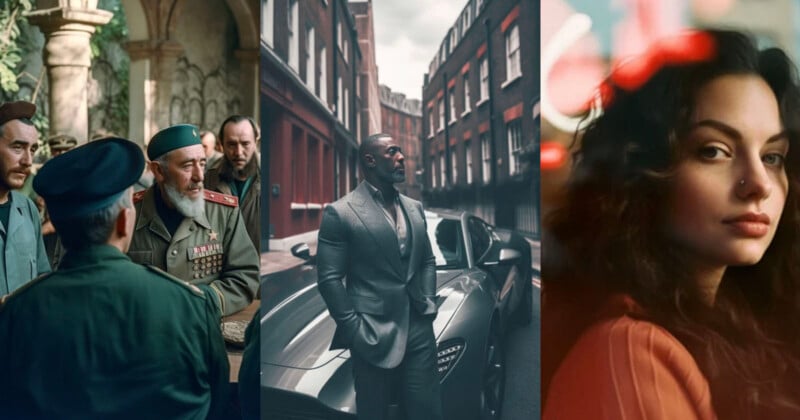Photographers May Have to Embrace AI, Whether They Want To or Not

There are many different kinds of photographer. There are passionate hobbyists, professionals, amateurs, and smartphone shooters who have only a passing interest in photography. With very few exceptions, all of them are now using artificial intelligence (AI) in some form or another.
Some won’t even realize they’re using AI. The smartphone photographer who gets vibrant, sharp photos might not realize that their device is relying heavily on computational photography to achieve the image.
The analog photographer who has digitally scanned their negative and is selecting a subject to alter in Photoshop may not understand that a powerful machine-learning algorithm is guiding the quick selection tool.
In many cases, AI has crept up on us. Virtually all recent advancements in photo editing technology are powered by neural networks. Professionals have come to rely upon de-noising tools, content-aware fill, and selecting fiddly objects — these are all powered by AI.
Generative AI
Generative AI programs like Midjourney and the new Photoshop Generative Fill tool are far less subtle. They generate entirely new elements that are based on hundreds of millions of photos — but are more or less totally computer generated.
I’ve been speaking to professional photographers about their views on AI and the potential impact on their livelihood and the general consensus is that it is still too early to tell.
There are some who believe their way of life is threatened and are assuming the absolute worst scenario — that they will be put out of business by the technology.
Some see it as an unfair competition, creating images entirely created on a computer that photographers have to work very hard to achieve.
It really depends on the type of photography you do. Wedding photographers will surely remain untouched for many years to come, but product photographers may find demand lessening in the coming months.
However, it is not easy to generate professional images from the likes of Midjourney and DALL-E. Technicians are needed and photographers have the most obvious transferrable skills.
Despite that fact, I imagine many photographers will balk. After all, the joy of photography is being out in the world, manipulating light, and creating real moments.
This may be true for some, but there are others who love the editing process more — sitting in front of a computer creating stunning images for hours on end. Surely generating synthetic images will appeal to those types of photographers.
Some photographers are already putting in a lot of effort to learn and master generative AI. There are myriad AI programs out there that can produce different results.
I wonder if these photographers who are “getting ahead of the game” will ultimately benefit in the long term.
While many resist AI, photographers who are adding AI image creation to their armory may find themselves in a very privileged position — having the ability to offer clients a mix of photos and synthetic photo-style art could prove lucrative.
The term “AI photo” is repeatedly thrown around, with many unable to stomach the phrase. However, more photo competitions are adding “AI Photo” as a category to enter, and the more I look at AI images the more I can’t help but feel that this new art form is now the closest medium to photography outside of the art itself.
Respected photojournalist Michael Christopher Brown recently turned to AI to illustrate the “inaccessible” story of Cubans fleeing to the United States. Viewing his impressive work generates (excuse the pun) a similar feeling to when I look at his other real photos, wonder and amazement.
I know people will disagree with me vehemently on this topic, it is sensitive and it brings out photographers’ passion. I understand people are angry at how AI image generators were created, it seems all of our work was thrown into an algorithm to make a profit for billion-dollar companies.
But the horse has bolted, technological advancements cannot be stopped, and AI is here to stay. If I was still a professional photographer that relied upon clients and jobs for my income, rather than being a journalist — I would be setting time aside to learn these tools now.
This story is part of PetaPixel’s weekly newsletter Clipped Highlights.
What is Clipped Highlights?
Clipped Highlights is a free, curated, weekly newsletter that will be sent out every Wednesday morning and will focus on a few of the most important stories of the previous week and explain why they deserve your attention. This newsletter is different from our daily news brief in that it provides unique insights that can only be found in Clipped Highlights.
In addition to unique takes on the biggest stories in photography, art, and technology, Clipped Highlights will also serve to feature at least one photo series or art project that we think is worth your time to check out. So often in the technology and imaging space we focus on the how and not the what. We think that it’s just as important, if not more so, to look at the art created by photographers around the world as it is to celebrate the new technologies that makes that artwork possible.
If this kind of content sounds like something you’re interested in, we encourage you to subscribe to the free Clipped Highlights newsletter today. You can read this week’s edition right here, no subscription necessary, to make sure it’s something you want in your inbox.
We’ll also make sure to share each edition of Clipped Highlights here on PetaPixel so if you aren’t a fan of email, you won’t be forced to miss out on the weekly newsletter.